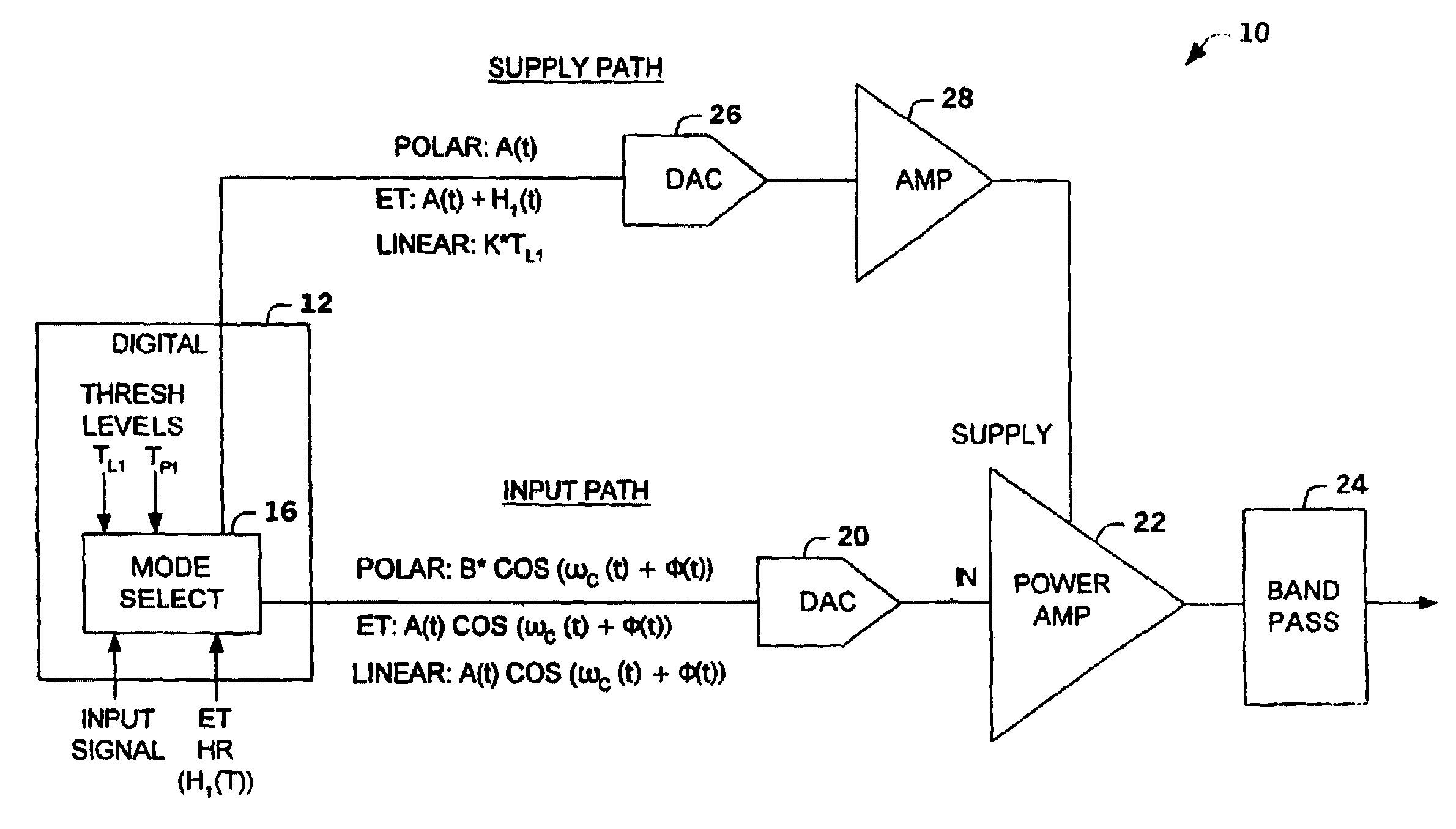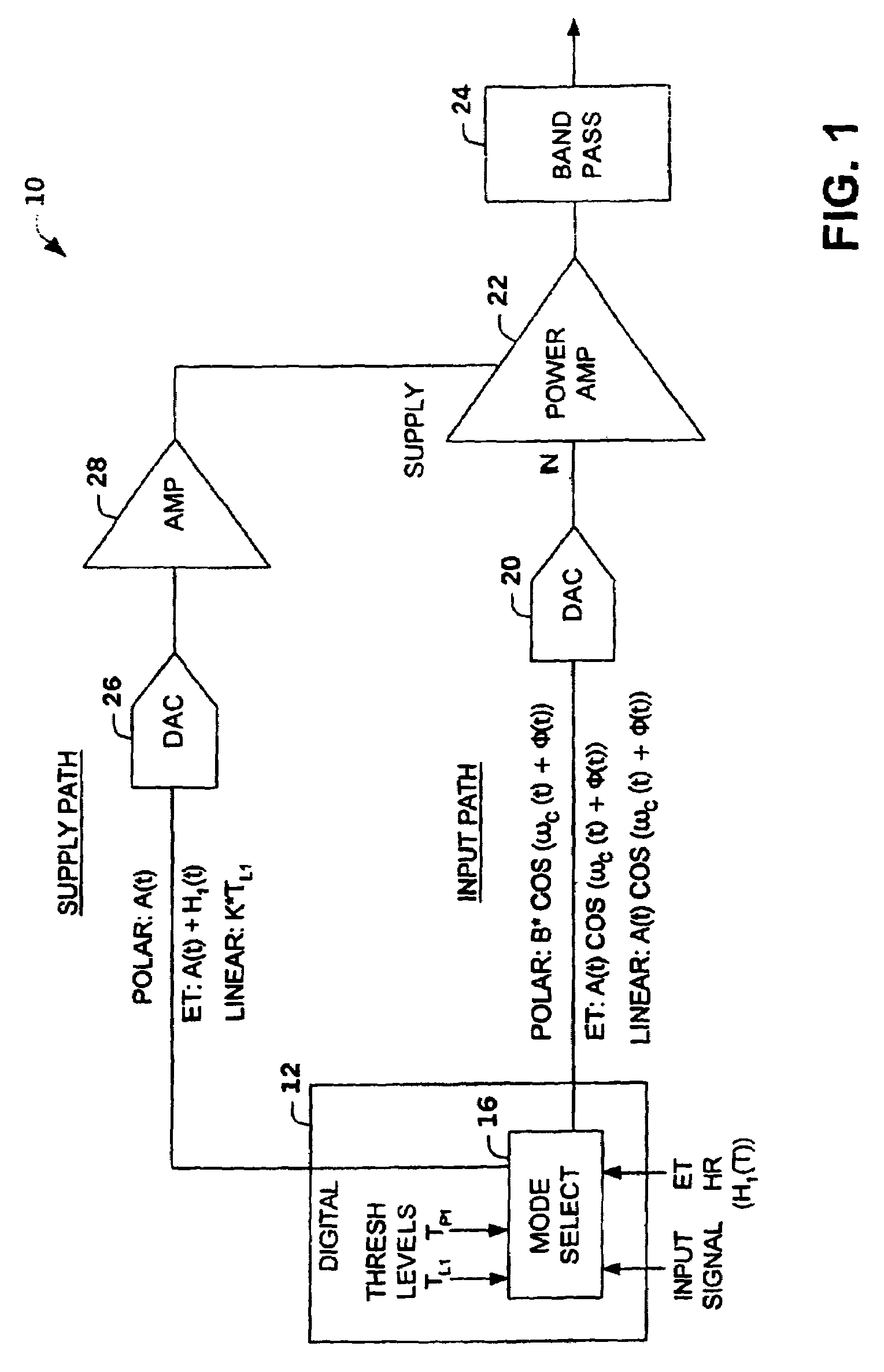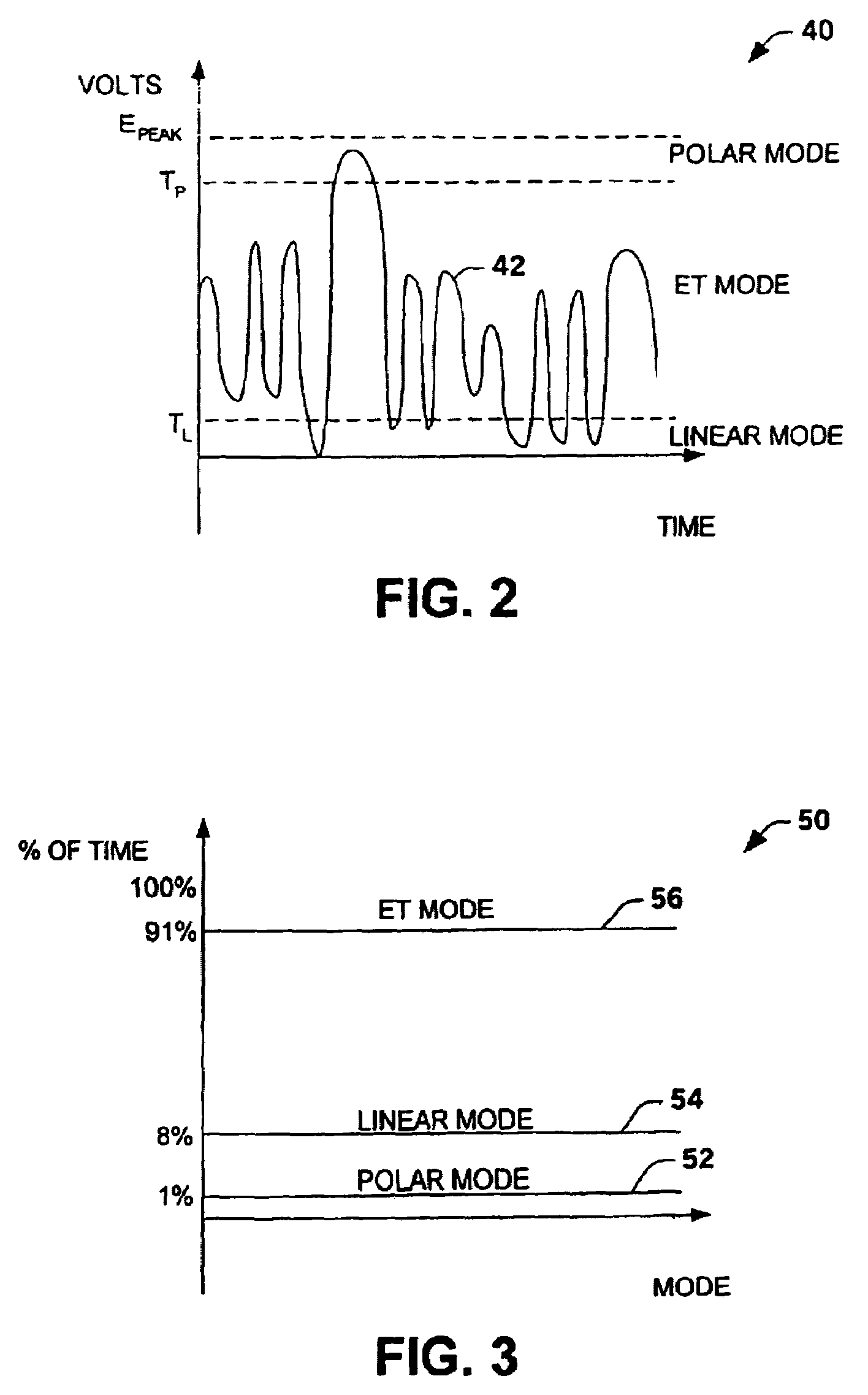Multi-mode amplifier system
a multi-mode amplifier and amplifier technology, applied in the field of electronic devices, can solve the problems of inefficient linear amplifier operation in these types of signals, general non-linear distortion reduction, and additional challenges, and achieve the effects of facilitating linearization of the amplifier system, reducing out-of-band emissions, and improving amplifier performan
- Summary
- Abstract
- Description
- Claims
- Application Information
AI Technical Summary
Benefits of technology
Problems solved by technology
Method used
Image
Examples
Embodiment Construction
[0022]The present invention relates to an amplifier system that switches between operation in a linear mode, an envelope tracking mode and a polar mode. The amplifier system switches between operations based on a characteristic of an input signal relative to a first threshold level and a second threshold level (e.g., envelope amplitude levels, digital count representation of signal levels, power amplifier power levels). The amplifier system can employ a power amplifier that maintains a constant class configuration. However, a power amplifier that maintains a constant class configuration is not required.
[0023]In one aspect of the invention, the amplifier system operates as an envelope tracking amplifier for signals (e.g., input signals, amplifier output signals) between low amplitude levels and highest amplitude levels. The amplifier system operates as a linear amplifier system (e.g., Class A, A / B, or B,) for low amplitude level signals and as a polar amplifier for peak amplitude lev...
PUM
 Login to View More
Login to View More Abstract
Description
Claims
Application Information
 Login to View More
Login to View More - R&D
- Intellectual Property
- Life Sciences
- Materials
- Tech Scout
- Unparalleled Data Quality
- Higher Quality Content
- 60% Fewer Hallucinations
Browse by: Latest US Patents, China's latest patents, Technical Efficacy Thesaurus, Application Domain, Technology Topic, Popular Technical Reports.
© 2025 PatSnap. All rights reserved.Legal|Privacy policy|Modern Slavery Act Transparency Statement|Sitemap|About US| Contact US: help@patsnap.com



